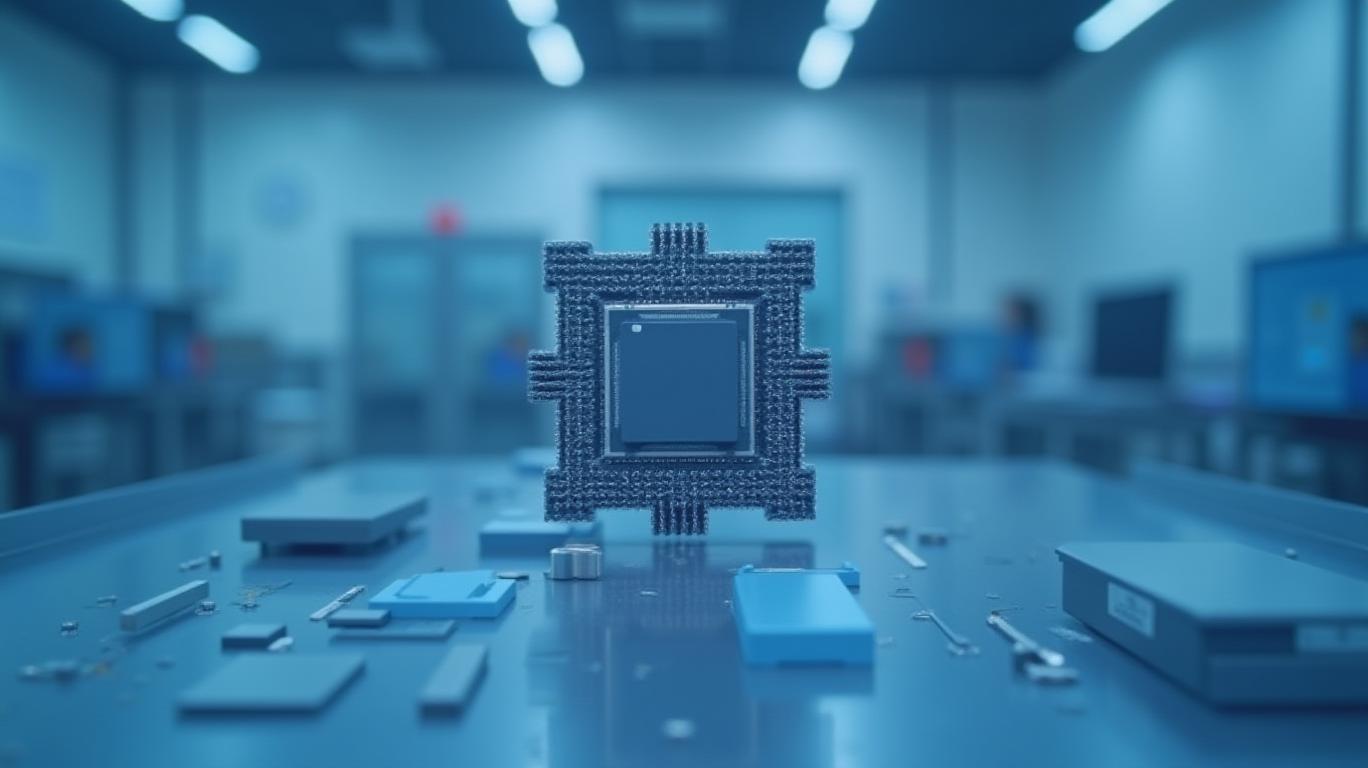ASM International Navigates Tariff Headwinds with Eyes on AI-Driven Growth
ASM International N.V. (ASM) has emerged as a bellwether for the semiconductor industry’s resilience, defying geopolitical and tariff-driven headwinds with a bold financial outlook. The company’s first-quarter 2025 results, which saw revenue surge 26% year-over-year to €839 million, underscore its ability to capitalize on the AI revolution. Despite lingering uncertainties around U.S.-China trade tensions, ASM’s guidance for 10-20% full-year sales growth reflects confidence in its position as a leader in advanced chip manufacturing tools.

Financial Fortitude Amidst Turbulence
ASM’s Q1 performance was bolstered by robust demand for its tools used in cutting-edge semiconductor technologies. New orders reached €834 million, a 14% annual increase, driven by 2nm gate-all-around (GAA) logic chips and high-bandwidth memory (HBM) applications. Gross margins expanded to 53.4%, the highest in over five years, as cost efficiencies and a favorable product mix offset rising operational complexities.
The company’s cash position remains a bulwark: free cash flow hit €264 million in Q1, and its €1.1 billion war chest supports a new €150 million share buyback program. However, ASM also faced a non-cash €215 million impairment charge tied to its investment in ASMPT, a joint venture with Shenzhen-based Pacific Technology. While this reduced reported net income to a €28.9 million loss, adjusted earnings rose to €191.9 million, highlighting the distinction between short-term accounting impacts and long-term operational health.
The Tariff Tightrope
ASM’s growth ambitions are not without risks. U.S. tariffs on Chinese-sourced components have disrupted supply chains, delaying shipments and pushing some revenue into 2026. The company’s reliance on Chinese suppliers—critical for certain semiconductor tool parts—has forced it to reevaluate logistics routes and diversify sourcing. Management emphasized that these challenges are being mitigated through “strategic dialogue with regulators and partners,” though the path remains fraught with uncertainty.
The semiconductor industry’s broader geopolitical landscape compounds these risks. U.S. export controls on advanced technologies, including extreme ultraviolet (EUV) lithography tools, have intensified competition for market share. Meanwhile, China’s retaliatory tariffs on materials like gallium—a key ingredient in semiconductor manufacturing—threaten global supply chains.
AI as the Growth Engine
ASM’s strategy hinges on its role in enabling the next wave of AI-driven chip innovation. The company’s tools are integral to manufacturing 3D integrated circuits (ICs) and heterogeneous chip architectures, which are essential for AI chips. TSMC’s CoWoS packaging platform, for instance, relies heavily on ASM’s deposition and etch systems to integrate chiplets into advanced AI processors.
The semiconductor equipment market’s overall growth is projected to lag behind ASM’s trajectory, with the wider wafer fabrication equipment (WFE) sector expected to grow only slightly in 2025. ASM’s focus on AI-centric segments—where demand is surging—positions it to outpace peers.
The Road Ahead
While ASM’s near-term outlook is clouded by tariffs and inventory overhang in certain semiconductor segments, its long-term prospects remain bright. A €35 billion order backlog (a figure cited in industry reports) provides visibility into 2026, and its share of the advanced-node market—critical for AI and high-performance computing—is expanding.
Investors should also note ASM’s geographic diversification. China, despite geopolitical risks, contributed strongly to Q1 orders, reflecting its status as a key market for AI infrastructure.
Conclusion
ASM International’s financial resilience, coupled with its dominance in AI-driven semiconductor technologies, makes it a compelling investment despite near-term headwinds. With margins at decade-high levels and a robust cash position, the company is well-equipped to navigate tariffs and trade tensions.
The 10-20% sales growth guidance is backed by a €35 billion order backlog and a 32.3% adjusted operating margin—the highest in its history. While risks like U.S.-China decoupling and inventory corrections loom, ASM’s strategic focus on advanced nodes and AI applications positions it to capitalize on the next phase of semiconductor innovation.
For investors seeking exposure to the AI revolution, ASM offers a blend of proven execution and forward-looking technology—making it a standout play in an industry balancing disruption and resilience.


_442a2dcc1749832873286.jpeg)
_e68fac6d1749831664430.jpeg)






